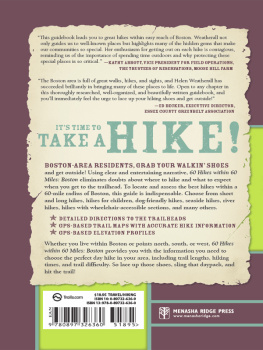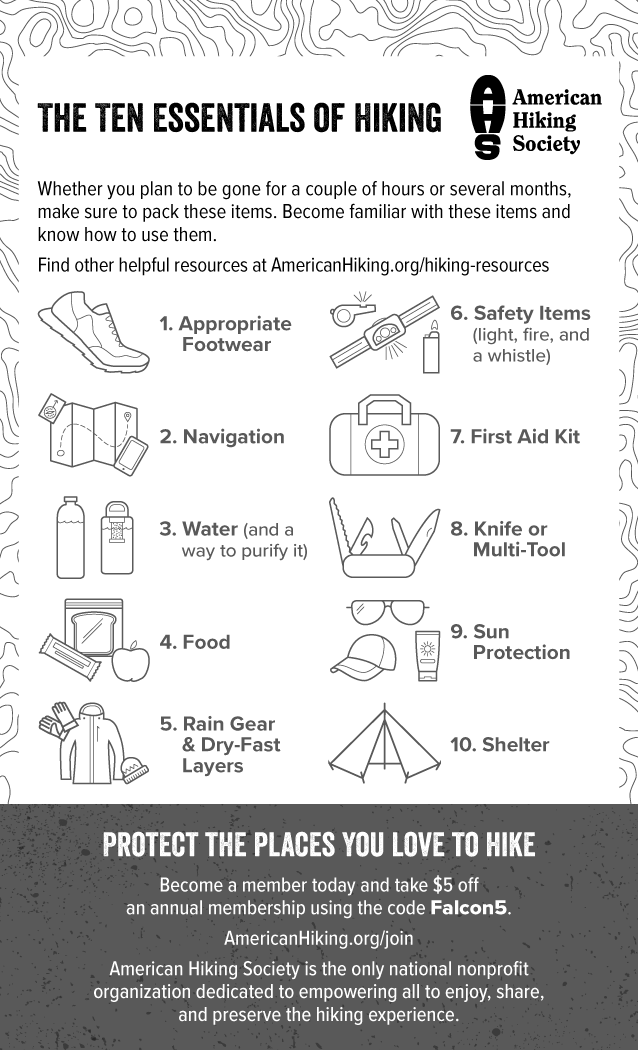I am indebted to the countless volunteers who maintain trails throughout the state of Rhode Island, whether they are blue-blazed trails spanning multiple counties or shorter quasi-public systems. Their efforts, along with those of individuals who have had the foresight to preserve open space even in the face of extreme development pressures, make many routes in this guidebook possible.
Thanks to the expert team of editors and production staff at Rowman & Littlefield for helping me make the second edition of this guide the best it can be. Special thanks to my wife, Renee, who supported my time away on weekends to cover these hikes and my long periods buried behind my laptop typing up these chapters.
This hike takes you out to Rome Point, the most reliable spot on Narragansett Bay for viewing seals between October and May. Terrain on the first leg of this route is a flat pebbled access road straight out to the beach. Then, after some beach walking, youll head out to the point through a cedar grove with water views on either side. The return route passes through a wooded marsh past remains of an old farmstead ripe for exploration.
Distance: 2.5-mile lollipop
Approximate hiking time: 1 hour
Difficulty: Easy
Elevation gain: 80 feet
Trail surface: Gravel road, wooded trail
Best season: OctApr for seal viewing
Other trail users: Cross-country skiers
Canine compatibility: Dogs must be on leash at all times
Permits and fees: None
Schedule: Open year-round from sunrise to sunset
Maps: TOPO! New England; trail maps at signboard near trailhead
Trail contact: State of Rhode Island DEMDivision of Parks & Recreation Headquarters, 1100 Tower Hill Rd., North Kingstown, RI 02852; (401) 667-6200; www.riparks.com
Finding the trailhead: From Providence and points north, take RI 1A through historic Wickford into the village of Hamilton. The trail entrance and parking will be 1.5 miles south of Hamilton to your left (east) and is marked with signage.
From the south, the trailhead is to your right (east) just over 0.5 mile on Route 1A from the intersection of RI 138. Youll know youve gone too far if you pass a brown sign with white lettering advertising the GILBERT STUART MUSEUM to the left (west).
The Hike
From the dirt parking lot surrounded by low-lying thick wooden railings, the trail begins on a gravel access road marked with a commemorative plaque and covered sign-board containing a trail map to your right. The road is very straight and flat after a slight decline from the parking area. Wooded marsh surrounds a sand and gravel roadbed elevated from the wetness. Your return trail comes in from the right, but its not readily visible. Continue straight.
A plain scrubby forest consisting of swamp maples and dense undergrowth grows to your left (north) and marsh continues on the right (south). Stone walls and a drier forest floor become visible through the trees. Youll notice side trails cutting into the woods to your left, but stay straight on the main road.
A power line crosses the road at 0.4 mile; here youll walk down a slight grade as you curve to the left. This is notable since up to this point the trail was completely flat and straight for as far as the eye could see. Youll reach the intersection of several trails at about 0.6 mile, where another power line crosses overhead. A narrow footpath leads into the woods to your right (south), and a grassy access road paralleling the power line begins to your left (north). Continue straight on the access road toward the ocean, which you can now see in the distance through the trees.
After passing the convergence of trails, youll pass a modest cedar grove to your left (north). At the coastline, youll be on Narragansett Bay with the Jamestown Bridge in the distance to your right (south). Turn left (northeast), walking along the beach, which is a mix of gravelly stone and sand with brushy woods fronting the shoreline to your left (west). This may not be a sunbathing or swimming beach, but it certainly has picturesque bay and island views.
Soon youll see a marsh behind the beach head to your left. A ways past the marsh, at about the 1.0-mile mark, youll see a trail to your left (west) marked by a small rock pile beneath a cedar. Take this trailthough, you can continue along the beach out to the point if you likeand join a narrow sandy trail, walking down a narrow peninsula to Rome Point. Tidal estuary waters are to your left (west), and the open bay is to your right (east) through dense cedar groves.
The trail is flat at sea level, and at 1.2 miles, youll reach the tip of Rome Point, which is the best vantage point for seal watching. As you look straight out into the bay, youll see small rocks poking up above the waterline where the seals hang out, and also notice a larger island with a house to the left (northeast) of these rocks. Turn around and retrace your steps or explore some side trails that spider off the main trail to your right (west) to the waters edge. Theres not much room to deviate, and soon the side trails parallel and connect back to the main trail. Bright white shells, dark stones on the shore, the blue ocean, and dark green cedars all envelop you, along with the ocean breezes, making it a memorable spot.
Once you reach the peninsulas base at about 1.4 miles, continue straight ahead on the footpath heading west, instead of veering left back down to the beach. Now the tidal estuary will be immediately to your right (north), visible through the cedars and down a small bank. This leg of the route gives you a different perspective of the estuary, with the wide-open bay in the distance. Views can, at times, be industrial in the distance but overall, they are still picturesque.
Youll enter a thick cedar grove at 1.5 miles, moving away from the water even though it remains visible to your right (north) through the trees. Winding into the interior of woods with more swamp maples in the mix, the trail bed is now carved down into the forest floor about 6 inches with a straight edge on either side, giving it the appearance of an old wagon road. Its obvious that traffic other than pedestrians predominated here at one time.
An intersection at 1.6 miles marks a trail to the left (south), but continue straight (southwest) through cedars mixed with saplings. Stay on the main trail even though youll see narrow footpaths branching out to the left.
As you reach a power line at 1.8 miles, cross beneath the power line and reenter the woods. Shortly after you reenter the woods, an old, rusted car from the 1950s will be visible through the trees to your left (south); continue straight on the main trail. From here, you will essentially follow this main trail back to where it intersects with the main access road you came in on from the parking area.
The forest mix broadens with some midgrowth oak, swamp maple, and a few cedars. Soon, through the trees to your right (northwest), youll see a deep and steep cellar hole. You will then come upon a shallow gully that parallels the trail until you reach a stone wall to the left (west) fronting a small marsh filled with water. At about the 2.0-mile mark, this marsh drains via a small stream under the trail and into the gully.
A little beyond this point, youll see an old homesite with a large concrete foundation, possibly a barn, to your right. A stream flows to the left (west) of the trail, and the path increasingly narrows, surrounded by dense briars and honeysuckle. There will be a number of trails veering off to either direction, but remain on the main trail.




